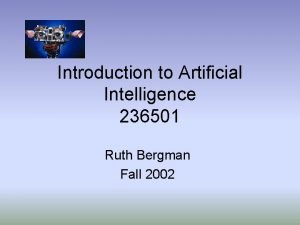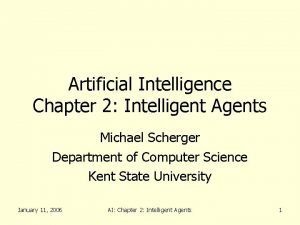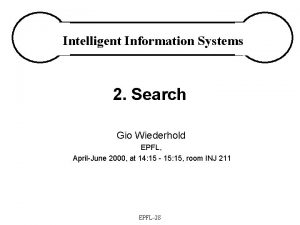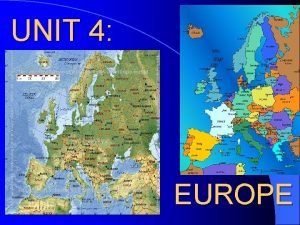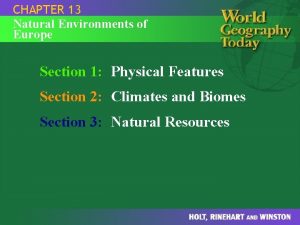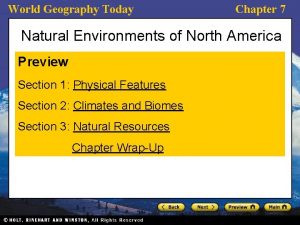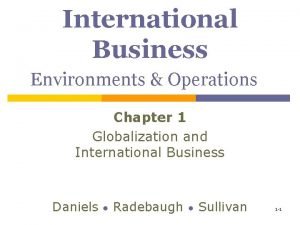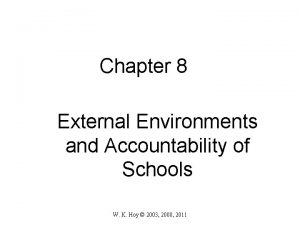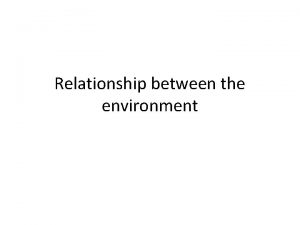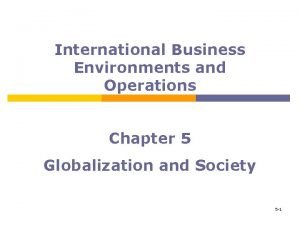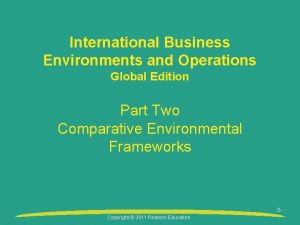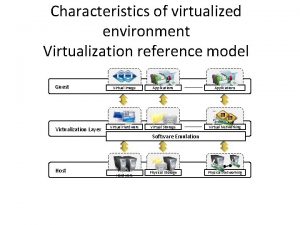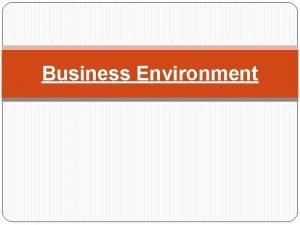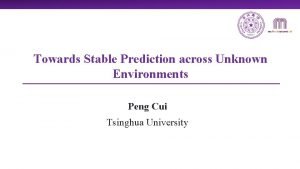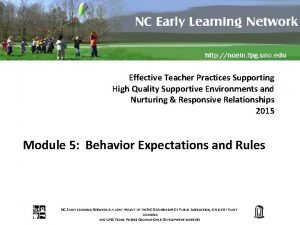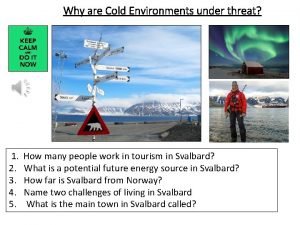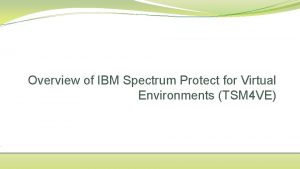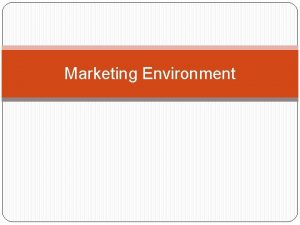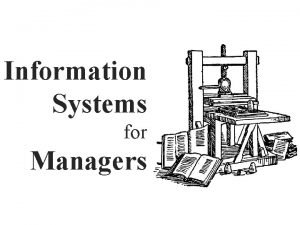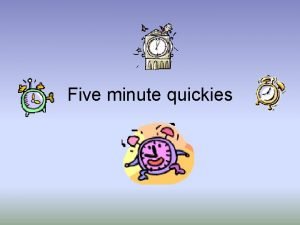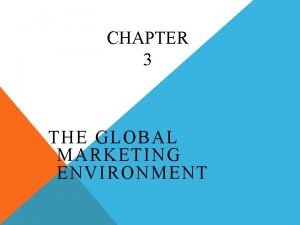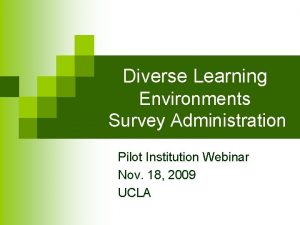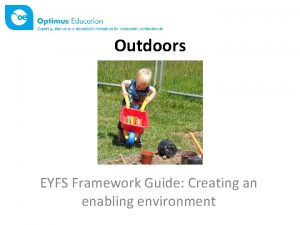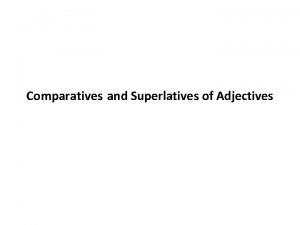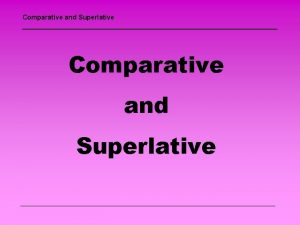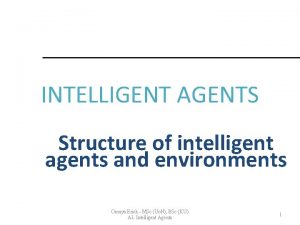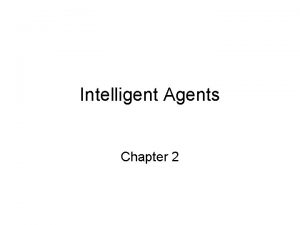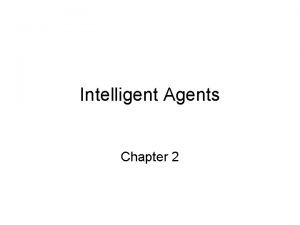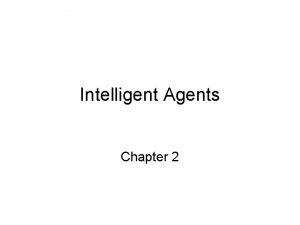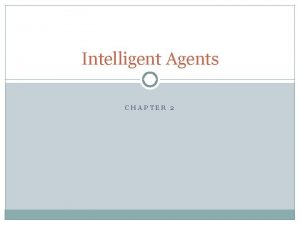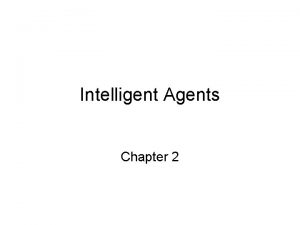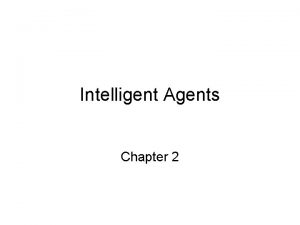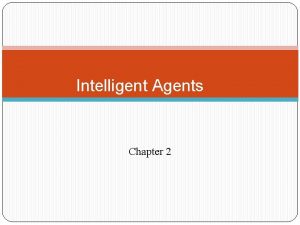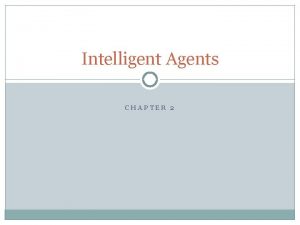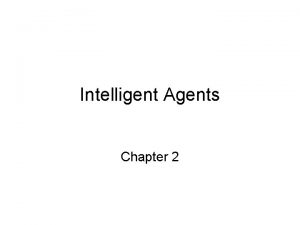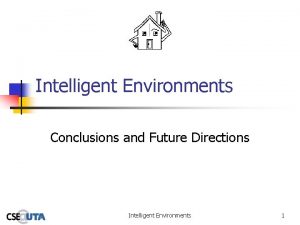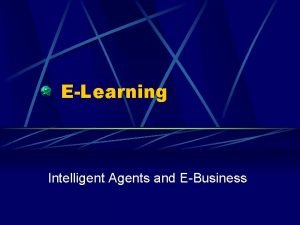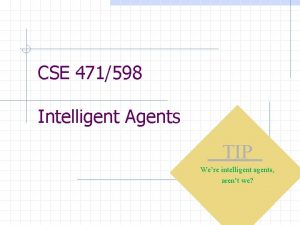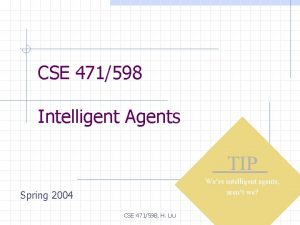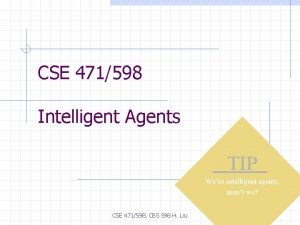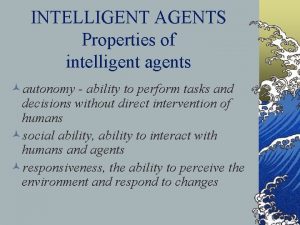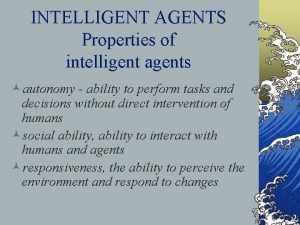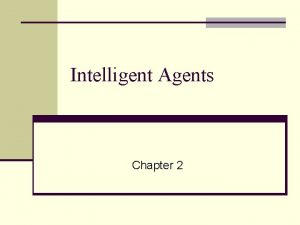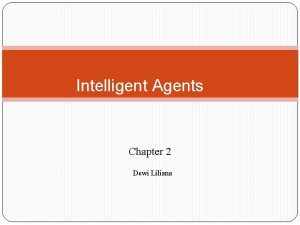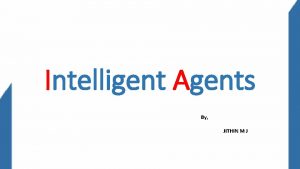Intelligent Agents Chapter 2 Outline Agents and environments




![Vacuum-cleaner world • Percepts: location and contents, [A , Dirty] • Actions: Left, Right, Vacuum-cleaner world • Percepts: location and contents, [A , Dirty] • Actions: Left, Right,](https://slidetodoc.com/presentation_image_h/876576f838b8d8c6184580b16e3f693e/image-5.jpg)
![Vacuum-cleaner world Percept Action [A, Clean] Right [A, Dirty] Suck [B, Clean] Left [B, Vacuum-cleaner world Percept Action [A, Clean] Right [A, Dirty] Suck [B, Clean] Left [B,](https://slidetodoc.com/presentation_image_h/876576f838b8d8c6184580b16e3f693e/image-6.jpg)



![Rational agents • Actions – Left, right, suck. • Current percept – [location, dirt] Rational agents • Actions – Left, right, suck. • Current percept – [location, dirt]](https://slidetodoc.com/presentation_image_h/876576f838b8d8c6184580b16e3f693e/image-10.jpg)


























- Slides: 36

Intelligent Agents Chapter 2

Outline • Agents and environments • Rationality • PEAS (Performance measure, Environment, Actuators, Sensors) • Environment types • Agent types

Agents • An agent is anything that can be viewed as perceiving its environment through sensors and acting upon that environment through actuators • Human agent: – Eyes, Ears, and other organs for Sensors; – Hands, Legs, Mouth, and other body parts for Actuators. • Robotic agent: – Cameras and Infrared range finders for Sensors; – Various Motors for Actuators.

Agents and Environments • The agent function f maps from percept histories P* to actions A : • [f: P* A] The agent program runs on the physical architecture to produce A. agent = architecture + program
![Vacuumcleaner world Percepts location and contents A Dirty Actions Left Right Vacuum-cleaner world • Percepts: location and contents, [A , Dirty] • Actions: Left, Right,](https://slidetodoc.com/presentation_image_h/876576f838b8d8c6184580b16e3f693e/image-5.jpg)
Vacuum-cleaner world • Percepts: location and contents, [A , Dirty] • Actions: Left, Right, Suck, No. Op • Function : (agent keeps Right and Left if both rooms are clean)
![Vacuumcleaner world Percept Action A Clean Right A Dirty Suck B Clean Left B Vacuum-cleaner world Percept Action [A, Clean] Right [A, Dirty] Suck [B, Clean] Left [B,](https://slidetodoc.com/presentation_image_h/876576f838b8d8c6184580b16e3f693e/image-6.jpg)
Vacuum-cleaner world Percept Action [A, Clean] Right [A, Dirty] Suck [B, Clean] Left [B, Dirty] Suck [A, Clean] [B, Clean] Nop

Rational agents • An agent should strive to "do the right thing", based on what it can perceive and the actions it can perform. • The right action is the one that will cause the agent to be most successful. • Performance measure: An objective criterion for success of an agent's behavior. – EX: Performance measure of a vacuum-cleaner agent: - amount of dirt cleaned up, - amount of time taken, - amount of electricity consumed, - amount of noise generated, etc.

Rational agents • Rational Agent: For each possible percept sequence, a rational agent should select an action that is expected to maximize its performance measure, given some built-in knowledge the agent has about the environment. • The performance measure that defines the criterion of success: – The agent’s percept sequence to data. – The agent’s prior knowledge of the environment. – The actions that the agent can perform.

Rational agents • Is a vacuum-agent rational? (Depends!) • Performance measure – amount of dirt cleaned up, – amount of time taken, – amount of electricity consumed, – amount of noise generated, etc. . • A priori ﺑﺪﺍﻫﺔ – Geography of the environment is known (two squares, A is on left and B is on right, etc. ). – Perception is trustable (no illusion )ﻭﻫﻢ. – Sucking cleans the current square.
![Rational agents Actions Left right suck Current percept location dirt Rational agents • Actions – Left, right, suck. • Current percept – [location, dirt]](https://slidetodoc.com/presentation_image_h/876576f838b8d8c6184580b16e3f693e/image-10.jpg)
Rational agents • Actions – Left, right, suck. • Current percept – [location, dirt] • Possible extensions – The agent have partial memory (reasoning percept histories). – The geography of the environment is unknown. – The agent cannot percept its current location. – Agent can learn from experience.

Rational agents • Rationality is distinct from omniscience (allknowing with infinite knowledge) ﻣﻌﺮﻓﺔ ﻏﻴﺮ ﻣﺤﺪﻭﺩﺓ • Agents can perform actions in order to modify future percepts so as to obtain useful information (information gathering, exploration). • An agent is autonomous ﻣﺴﺘﻘﻞ ﺑﺬﺍﺗﻪ if its behavior is determined by its own experience (with ability to learn and adapt).

Specify the setting for intelligent agent design: PEAS Description • • • PEAS: P : Performance measure E : Environment A : Actuators S : Sensors • Must first specify the settings for intelligent agent design.

PEAS • EX: Consider the task of designing an automated taxi driver: (Intelligent Transportation Systems) – Performance measure: Safe, fast, legal, comfortable trip, maximize profits – Environment: Roads, traffic, pedestrians ﻣﺸﺎﺓ , customers. – Actuators: Steering wheel, accelerator, brake, signal, horn. – Sensors: Cameras, sonar, speedometer, GPS, odometer ﻋﺪﺍﺩ ﺍﻟﻤﺴﺎﻓﺎﺕ , engine sensors, keyboard.

PEAS • Agent: Medical diagnosis system • Performance measure: Healthy patient, minimize costs & lawsuits ﺩﻋﺎﻭﻱ ﻗﻀﺎﺋﻴﺔ. • Environment: Patient, hospital, staff. • Sensors: Keyboard (entry of symptoms ﺃﻌﺮﺍﺽ , findings ﻧﺘﺎﺋﺞ , patient's answers) • Actuators: Screen display (questions, tests ﻓﺤﻮﺻﺎﺕ , diagnoses ﺗﺸﺨﻴﺺ , treatments ﻋﻼﺝ , referrals )ﺗﺤﻮﻳﻞ

PEAS • Agent: Interactive English tutor • Performance measure: Maximize student's score on test • Environment: Set of students • Sensors: Keyboard • Actuators: Screen display (exercises, suggestions, corrections)

PEAS • Agent: Part-picking robot • Performance measure: Percentage of parts in correct bins ﺻﻨﺎﺩﻳﻖ • Environment: Conveyor belt with parts, bins • Sensors: Camera, joint angle sensors • Actuators: Jointed arm and hand

Environment types • Fully observable (vs. partially observable): An agent's sensors give it access to the complete state of the environment at each point in time. – Playing chess? Fully. – Medical diagnosis? Partially. – Taxi driving? Partially.

Environment types • Deterministic (vs. stochastic) ﻣﺤﺪﺩ / ﻗﻄﻌﻲ : The next state of the environment is completely determined by the current state and the action executed by the agent. – Medical diagnosis? Stochastic. – Battle field ? ﻣﻴﺪﺍﻥ ﺍﻟﻤﻌﺮﻛﺔ Stochastic. – E-shopping? Deterministic. – E-auction? Stochastic. – Playing chess? Strategic. • Strategic : If the environment is deterministic except for the actions of other agents.

Environment types • Episodic (vs. sequential) ﺣﺪﺛﻲ / ﺳﺒﺒﻲ : An agent’s action depends only on an “episode” (snapshot) of the environment, i. e. history independent. – Chess? Sequential. – Web search? Episodic.

Environment types • Static (vs. dynamic): The environment does not change over time. – Playing crossword puzzle ? ﻛﻠﻤﺎﺕ ﻣﺘﻘﺎﻃﻌﺔ Static. – Playing soccer? Dynamic. – Battle field? Dynamic.

Environment types Discrete (vs. continuous): A limited number of distinct, clearly defined percepts and actions. – Playing chess? Discrete. – Taxi driving? Continuous

Environment types • Single agent (vs. multi-agent): An agent operating by itself in an environment. – Crossword puzzle? Single – Playing chess? Multi – Taxi driving? Multi

Environment types Fully observable Deterministic Episodic Static Discrete Single agent Chess with a clock Yes Strategic No Semi Yes No Chess without a clock Yes Strategic No Yes No Taxi driving No No No • The environment type largely determines the agent design • The real world is (of course) partially observable, stochastic, sequential, dynamic, continuous, multi-agent

Relationship between Agents • Collaborative vs. Competitive – Playing chess? Competitive. – Taxi driving? Cooperative, • Trustworthy ﺟﺪﻳﺮ ﺑﺎﻟﺜﻘﺔ vs. Suspicious ﻣﺸﺒﻮﻩ • Same capabilities or different • Share information or not • Delegate responsibility ﻳﻔﻮﺽ ﺍﻟﻤﺴﺆﻠﻴﺔ or not

Agent functions and programs • An agent is completely specified by the agent function mapping percept sequences to actions • One agent function (or a small equivalence class) is rational • Aim: find a way to implement the rational agent function concisely ﺑﺎﻳﺠﺎﺯ

Agent types • Table-lookup agent – Huge table. – Take a long time to build the table. – No autonomy. – Even with learning, need a long time to learn the table entries.

Agent types • Four basic types in order of increasing generality: • Simple reflex agents • Model-based reflex agents • Goal-based agents • Utility-based agents


Simple reflex agents


Model-based reflex agents


Goal-based agents


Utility-based agents

Technologies of Software Agents • Machine learning • Information retrieval • Agent communication • Agent coordination • Agent negotiation • Natural language understanding • Distributed objects
 Model-based agent example
Model-based agent example 236501
236501 Table driven agent in ai
Table driven agent in ai Structure of intelligent agents
Structure of intelligent agents Googleö
Googleö Chapter 13 natural environments of europe
Chapter 13 natural environments of europe Chapter 13 natural environments of europe
Chapter 13 natural environments of europe World geography
World geography Sentence outline example
Sentence outline example International business and globalisation
International business and globalisation External environments and accountability of schools
External environments and accountability of schools Interrelation between micro and market environment
Interrelation between micro and market environment International business environments and operations
International business environments and operations International business environments and operations
International business environments and operations Exercise in hot and cold environments
Exercise in hot and cold environments International business environments and operations
International business environments and operations Characteristics of virtualization environment
Characteristics of virtualization environment Goals of business environment
Goals of business environment Peng cui tsinghua
Peng cui tsinghua Psychologically informed environments
Psychologically informed environments Psychologically informed environments
Psychologically informed environments Creating supportive environments smoking
Creating supportive environments smoking High quality supportive environments
High quality supportive environments Designing constructivist learning environments
Designing constructivist learning environments Why are cold environments under threat
Why are cold environments under threat Include.vmsnapshotattempts
Include.vmsnapshotattempts Actors in marketing environment
Actors in marketing environment Implations
Implations Different environments
Different environments Global marketing environment
Global marketing environment Diverse learning environments survey
Diverse learning environments survey Enabling environments eyfs
Enabling environments eyfs Diverse learning environments survey
Diverse learning environments survey Decision support systems and intelligent systems
Decision support systems and intelligent systems New comparatives
New comparatives Fat comparative and superlative form
Fat comparative and superlative form Conventional computing and intelligent computing
Conventional computing and intelligent computing

